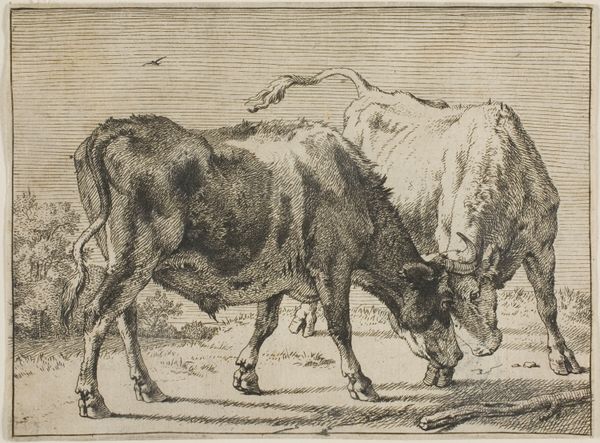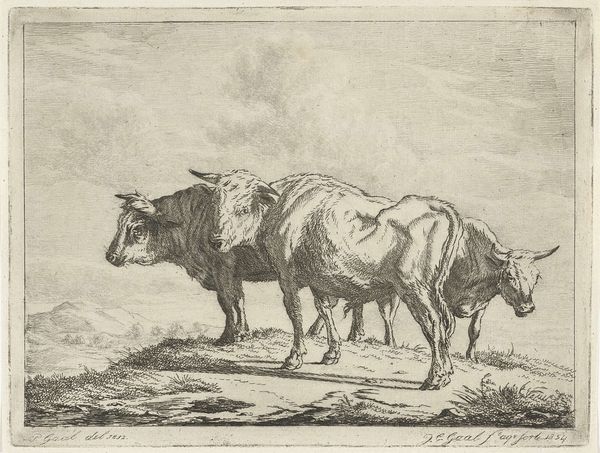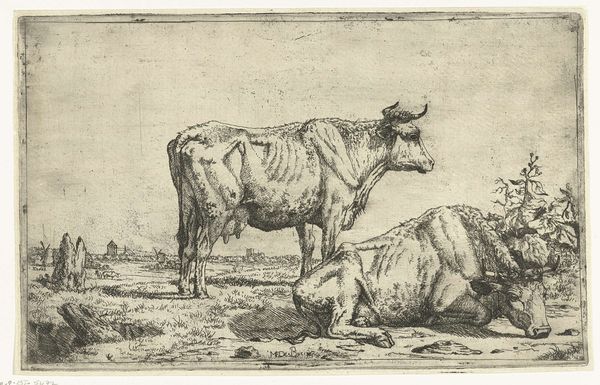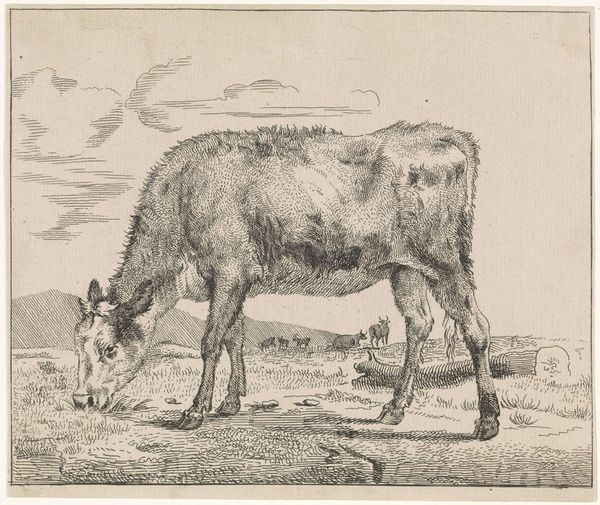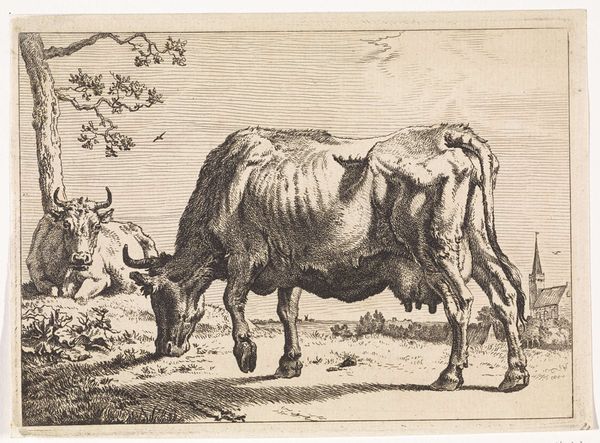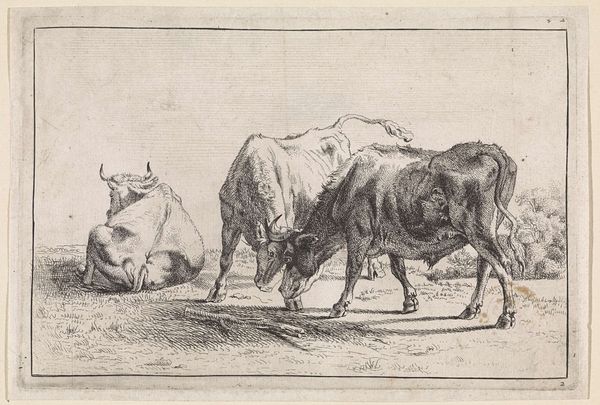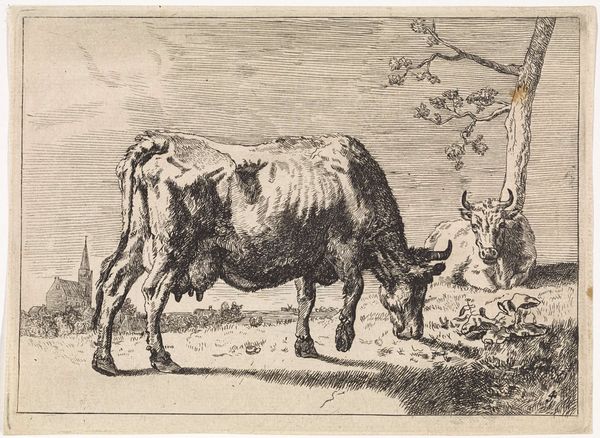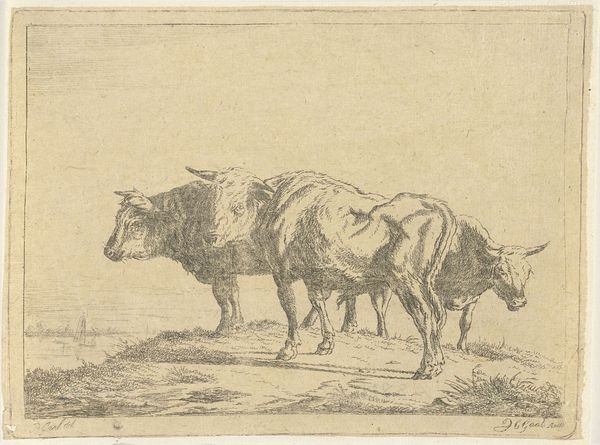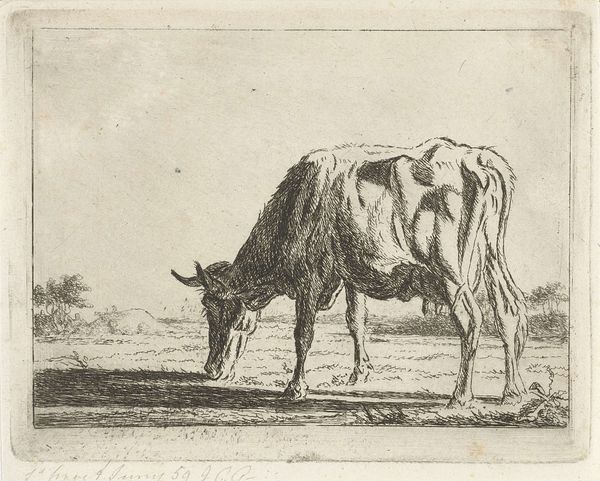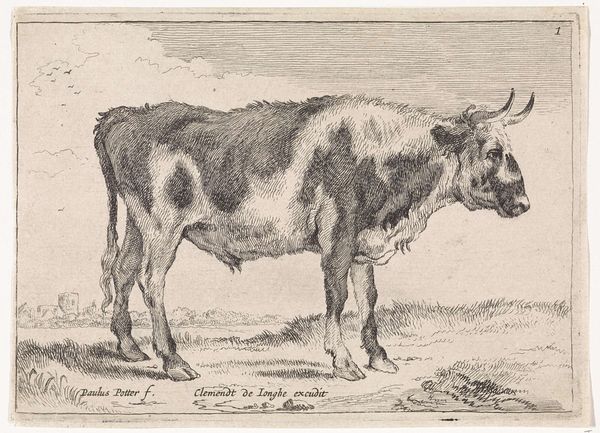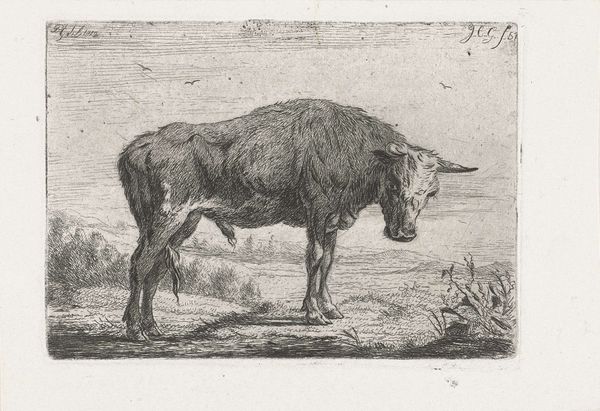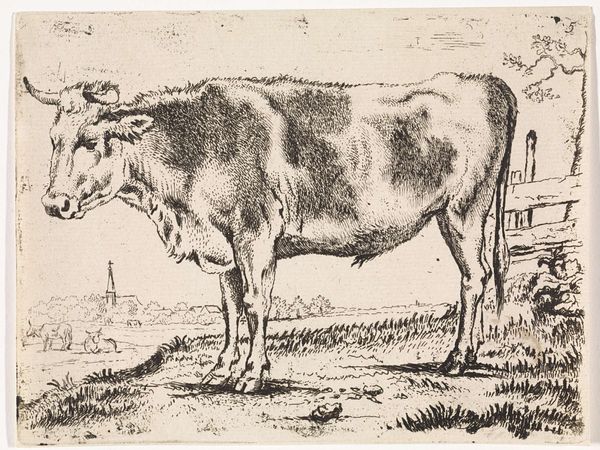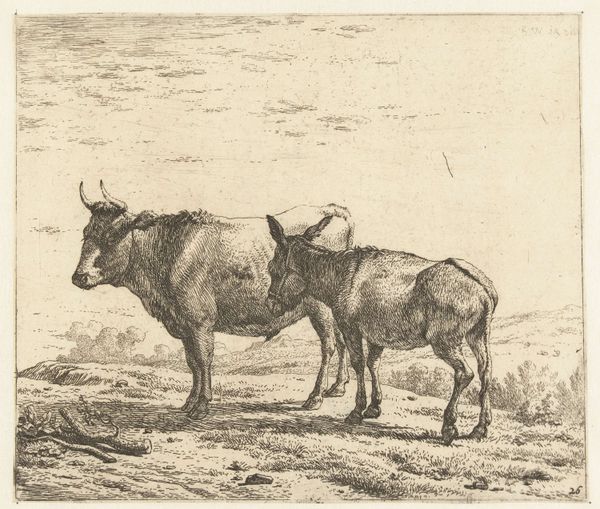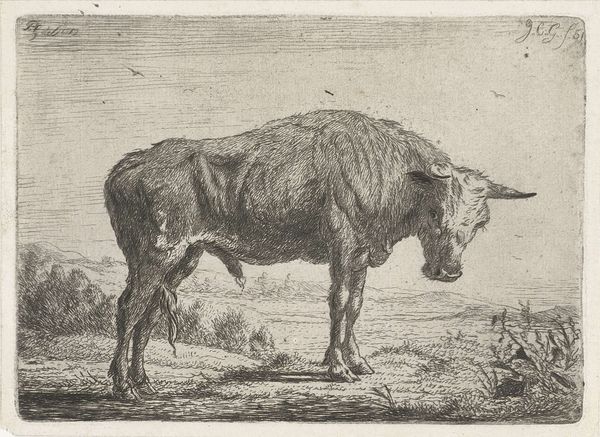
engraving
#
baroque
#
landscape
#
figuration
#
form
#
line
#
genre-painting
#
engraving
#
realism
Dimensions: height 118 mm, width 160 mm
Copyright: Rijks Museum: Open Domain
Curator: Today, we're looking at "Twee vechtende ossen," or "Two Fighting Oxen," an engraving dating from somewhere between 1650 and 1700. It's currently held in the Rijksmuseum. What are your initial impressions? Editor: My first impression is one of tension, almost a primitive struggle. The dark lines of the engraving accentuate the musculature of the animals, but also their agitated state. I also note the roughness of the earth; everything emphasizes a hard materiality. Curator: Indeed. The emphasis on line really dictates the composition. The artist uses hatching and cross-hatching to build form and texture, defining the mass of the oxen but also contributing to a sense of raw, untamed energy. The background is minimal, pushing the animals into the foreground as the central event. Editor: What strikes me is the labor inherent in creating this image, the slow, deliberate cutting into the metal plate. Consider the tools employed, the pressure exerted. Each line represents a physical act, a trace of the artist’s engagement with the material world. This artwork makes clear that even reproductive processes like engraving are inherently tied to material and social conditions. Curator: Certainly, it is an illustration of craft, of the transfer of artistic intent through meticulous technique. One could argue, though, that the realism achieved—the almost photographic depiction of the oxen's forms—is where the artistic triumph lies. It transcends the purely mechanical process of its creation. Editor: I don't know. The subject itself - these animals embroiled in conflict - speaks to me about the raw reality of agricultural life at the time. These aren't idealized creatures; they’re working animals caught in a brutal act of dominance. You see the life behind those eyes, which, if it isn't obvious from the landscape surrounding them, really reflects the material conditions from which this engraving emerged. Curator: A powerful thought. The intersection of form and content invites consideration of how the structure reinforces and communicates themes of naturalism and the animalistic essence the image invokes. Editor: And the making. To bring these animals and what their image signifies into the present is an intersection we are now a part of too.
Comments
No comments
Be the first to comment and join the conversation on the ultimate creative platform.
